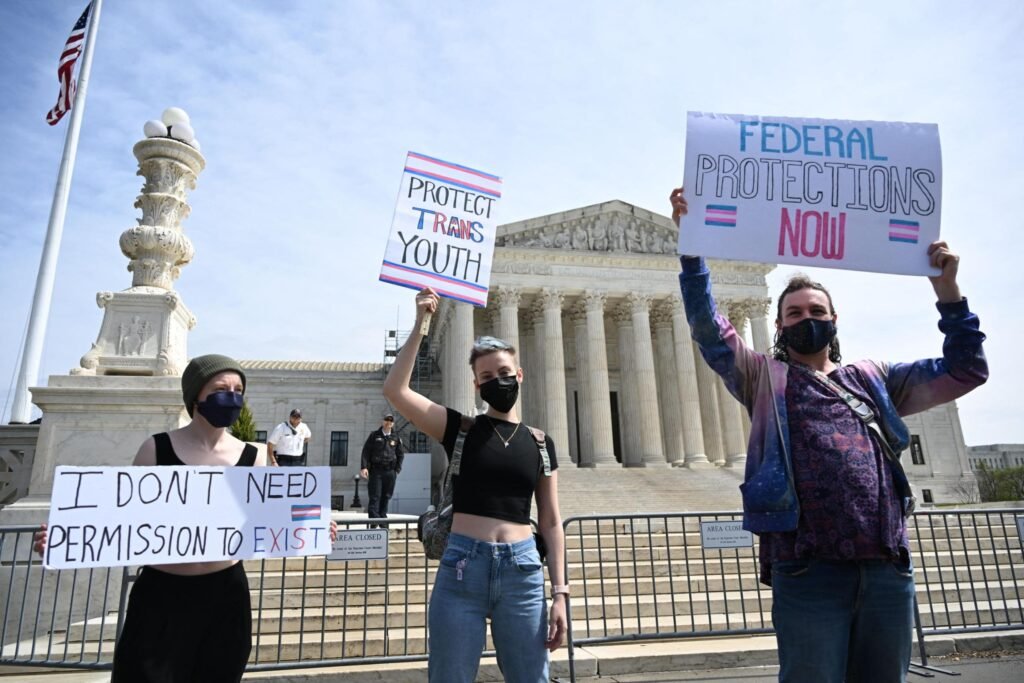In a major development that could impact the rights of transgender individuals across the country, the Supreme Court has ordered lower courts to re-evaluate several high-profile transgender cases. These decisions mark a significant moment in the ongoing legal and social debate surrounding transgender rights in the United States.
The move by the highest court in the country comes amid growing public attention to how transgender individuals are treated in schools, healthcare, prisons, and sports. By sending these cases back to the lower courts, the Supreme Court has essentially asked for a second look one that considers more recent developments in both law and society.
Let’s explore what this means for the people involved, the wider transgender community, and the legal system as a whole.
Why the Supreme Court Transgender Case Review Matters
The Supreme Court transgender case review signals a shift in how the judiciary is handling cases that involve gender identity and civil rights. While the Supreme Court did not rule on the cases directly, their action sends a message: the lower courts may have missed important legal or constitutional issues that need to be reconsidered.
This review involves cases dealing with:
- Access to gender-affirming healthcare
- Participation of transgender students in school sports
- Bathroom and locker room access policies
- Transgender rights in prisons
In these cases, federal appeals courts had made decisions that were either favorable or unfavorable to transgender plaintiffs. The Supreme Court’s decision to vacate those rulings and send them back down for further review could change the legal outcomes.
A Closer Look at the Transgender Cases in Review
1. Healthcare Restrictions for Transgender Youth
One of the most closely watched cases involves laws in states like Tennessee and Kentucky that ban gender-affirming healthcare for transgender minors. These include treatments such as puberty blockers, hormone therapy, and sometimes surgical procedures.
Supporters of the bans argue that such treatments are irreversible and experimental. Opponents—including major medical associations—claim the bans are discriminatory and harmful.
Previously, federal courts upheld the laws, but now, with the Supreme Court transgender case review, those rulings must be reassessed. The justices asked the lower courts to reconsider their decisions in light of potential constitutional violations, such as the Equal Protection Clause and parental rights.
2. School Sports Participation
Another major issue involves transgender students’ ability to compete on school sports teams that match their gender identity. Multiple states have passed laws that restrict transgender girls from playing on girls’ teams.
In some cases, courts allowed the bans to go into effect. But LGBTQ+ advocates say these laws violate Title IX, a federal law that prohibits sex-based discrimination in education.
With the Supreme Court stepping in, the legal debate now centers on whether excluding transgender athletes is fair and legal—or if it amounts to unlawful discrimination.
What Does “Sending the Case Back” Mean?
When the Supreme Court vacates a lower court’s decision and remands the case, it is essentially hitting the “reset” button.
Here’s what this means in simpler terms:
- The original decision by the lower court no longer stands.
- The case is sent back to the same court (or another one) to be looked at again.
- The court must reconsider the case using new legal arguments, evidence, or context.
This process can take months or even years, but it gives the parties involved another chance to argue their case—and possibly get a different outcome.

The Bigger Picture: Transgender Rights and the Legal Landscape
The Supreme Court transgender case review is part of a much larger national conversation. In recent years, there has been a sharp increase in the number of laws targeting transgender people, especially youth.
According to the American Civil Liberties Union (ACLU), over 500 anti-LGBTQ+ bills were introduced in state legislatures in 2024 alone. Many of these focused specifically on:
- Limiting access to gender-affirming medical care
- Restricting participation in sports
- Controlling bathroom use based on birth sex
- Reducing legal recognition of gender identity
While some of these laws have been struck down by courts, others have been allowed to take effect—creating a confusing patchwork of policies across the country.
The Supreme Court’s decision to review these cases could help bring more clarity and consistency to this patchwork, potentially setting new legal standards that lower courts must follow in future cases.
Legal Experts React: A Potential Turning Point
Many legal scholars see the Supreme Court’s move as an invitation for lower courts to take civil rights claims more seriously.
Mary Ziegler, a professor of constitutional law, said in an interview:
“The Court didn’t hand down a clear opinion, but by sending these cases back, it’s signaling that the lower courts may not have fully considered constitutional protections that apply to transgender individuals.”
Some experts believe this could lead to stronger protections under the Constitution and existing civil rights laws.
Others caution that it’s too early to tell how the lower courts will respond. Judges may still rule against transgender plaintiffs, depending on how they interpret the law.
Political and Public Reactions
Support from LGBTQ+ Advocacy Groups
Organizations like the Human Rights Campaign (HRC), GLAAD, and the ACLU welcomed the Court’s decision. In a joint statement, they said:
“The Supreme Court’s action gives new hope to transgender youth and their families. The fight is far from over, but this is a step in the right direction.”
These groups are preparing for the cases to return to federal appeals courts, where they plan to continue defending transgender rights.
Conservative Pushback
On the other side, conservative groups that support the bans also claimed victory, noting that the Supreme Court did not explicitly rule against the laws in question.
Some political leaders, especially in Republican-led states, argue that their laws are about protecting children and ensuring fairness in sports.
This tension between civil rights and state laws is likely to remain a hot topic in both courtrooms and campaign trails.
What Happens Next?
Here’s what to expect moving forward:
- Lower Courts Will Rehear the Cases
Judges must now take into account new constitutional arguments and possibly new evidence. - More Appeals Are Likely
Depending on how the lower courts rule, the cases could end up back at the Supreme Court again—this time for a final decision. - Impact on Future Legislation
Lawmakers in both red and blue states will watch closely. If courts strike down these laws, it may discourage others from passing similar legislation. - Legal Precedents May Evolve
If the courts start ruling in favor of transgender plaintiffs, those decisions could set a precedent for future civil rights cases.
The Human Side: Stories Behind the Lawsuits
Behind each case are real people—teenagers seeking healthcare, students wanting to play sports, and families fighting for their children’s rights.
Take, for example, Landon, a 15-year-old transgender boy from Kentucky whose parents sued the state after a law barred him from accessing hormone therapy.
“This law took away my son’s right to feel safe in his own body,” said Landon’s mother. “We’re not asking for special treatment—just the right to live our truth.”
Stories like Landon’s are at the heart of why these cases matter. While the legal battles are complicated, the human stakes are deeply personal.
Final Thoughts: Why the Supreme Court’s Action Is So Important
The Supreme Court transgender case review doesn’t resolve the legal issues, but it keeps the conversation alive—and sends a powerful signal that these cases deserve deeper examination.
Whether you’re a parent, a student, a legal scholar, or simply someone who cares about equality, the outcome of these cases will likely shape the future of civil rights in America.
As these cases move back through the legal system, all eyes will be on how lower courts respond—and whether this marks a turning point in the fight for transgender rights.
Read Next – Supreme Court Rejects Challenge to California Animal-Welfare Law





